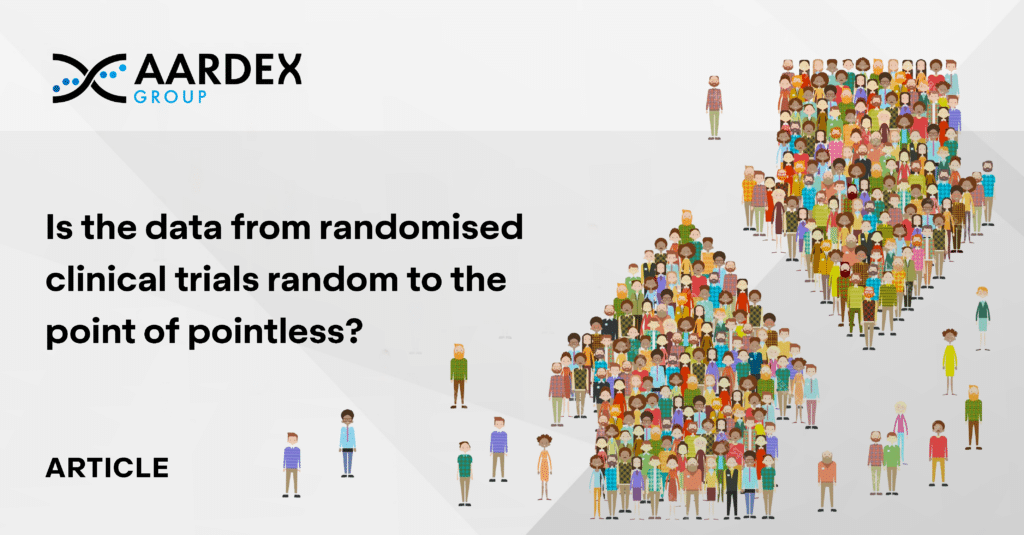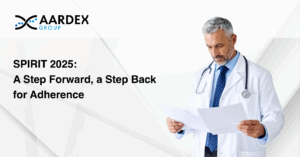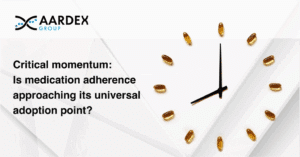In a recent paper titled ‘The impacts of undetected nonadherence in phase II, III and post-marketing clinical trials: An overview’ the authors detailed the findings of a research project which aimed to provide an overview of the consequences of unrecognized nonadherence in randomised clinical trials (RCTs).
Based on reviewing published academic papers and qualitative interviews with key opinion leaders, the study focused on clinical trial phases II, III and post-marketing products in ambulatory settings across a variety of therapeutic areas and indications.
Led by Elise Le Flohic, Faculty of Health, Medicine and Life Sciences, Maastricht University, the conclusion of the paper continues to reinforce the AARDEX position – that unrecognized nonadherence in clinical trials has serious consequences.
The Consequences of Nonadherence
As one expert, the ex-Managing Director of a pharma company, observed “There are three types of losses when patients are not adhering to the prescription: (i) patients are not getting the expected benefits of the treatment, (ii) if patients are not refilling their prescription as much as they should be, there is a loss of revenues for the pharmaceutical company and (iii) payers are reimbursing the treatment but might still have to pay for a more expensive therapy down the line if the patient ends up with the condition that the initial treatment was designed to prevent.”
RCTs continue to be regarded as the ‘go-to’ protocol for establishing the safety and efficacy of new drugs. However, as C. Everett Koop, MD and US Surgeon General famously stated back in 1985, “Drugs don’t work in patients who don’t take them”.
And therein lies the issue.
Flaws in Traditional Monitoring Methods
The accuracy of the output can only be as accurate as the input, i.e. the level of adherence to the established dosing regimen will, by definition, determine the level of drug exposure throughout the study. This issue can be exacerbated where medications have a narrow therapeutic window or a complex dosing schedule, resulting in a higher likelihood of disproportionate effects when patient adherence is compromised.
AARDEX, along with other members of the scientific community has long discussed the inherent flaws in the traditional monitoring methods such as pill counting or patient self-reporting. And yet, these approaches continue to be extensively employed in RCTs, despite the evident limitations to assess reliably the drug exposure.
The Scope and Risks of Nonadherence
Let us not ignore the truth. 50% of patients involved in clinical trials do not adhere to the dosing regimen specified in the protocol. And for one in five drugs on the market the dosage specified in the label is at least 50% higher than required.
How can data derived from such studies possibly be relied upon? The potential for catastrophic losses in profits and even a tragic loss of life is a real possibility – it is a public health relations nightmare just waiting to happen!
As one expert observed “Aside the risk of post-marketing dose reduction, there is also a chance, when patient adherence is suboptimal, that the dose has to be increased by the prescriber to get the targeted efficacy.”
Broader Implications of Nonadherence
How does that align with the safety profile of the drug?
As the research states univocally, neglecting the importance of suboptimal medication adherence in trials may have serious consequences on drug development outputs and related healthcare decision-making, beyond the safety or the patient and the profitability of the product. Here are just some of them…
- Failure to show efficacy altogether or at least underestimate efficacy
- Miscalculation of side effects
- Overestimation of required doses
- Deteriorating health outcomes
- Additional costs associated with increases in patient recruitment
- Delays to market launch
- Product recall
Why Nonadherence Is Overlooked
So why don’t drug developers sufficiently consider poor adherence?
Simply, there is no mandate or incentive from regulatory bodies to do so.
Due to this lack of imperative, or even basic regulatory guidance, there has been no robust, academically led position on the consequences of nonadherence in clinical trials.
Investigating Phase-Specific Consequences
The study also went on to investigate which consequences of nonadherence are the most problematic. In phase II, experts reported the main concern was the accurate estimation of efficacy to establish the dosing regimen. In phase III, the increase in sample size was seen as important due to the increased costs and extension of trial timeline.
Post market launch, three main nonadherence-related losses were identified…
- Patients not deriving the expected benefits of the treatment
- Patients not following the prescription results in revenue loss for the developer
- Payers reimbursing an ineffective treatment that may require a more expensive therapy as the condition exacerbates.
Solutions for Addressing Nonadherence
So, what is the answer?
One expert accurately identified that there is no such thing as a perfectly adherent patient and that if the dose is only calculated for perfectly adherent patients, the drug might underperform because of real-life suboptimal adherence.
On the contrary, another expert argued that monitoring nonadherence cannot be neglected on those grounds – the data obtained for developing the treatment would be inaccurate and might lead to poor decision-making.
And so, the discussion continues, even though the answer is glaringly obvious…
‘Without a robust methodology in place, study results will be distorted and put patient safety at risk. Adherence-informed analysis should be mandatory to provide a more patient-centric approach to estimating treatment effects “as taken”.’
Where next? A Call for Better Solutions
The research highlighted that unrecognized nonadherence in clinical trials has a number of consequences for pharma, patient and payer, however it seems that legacy methods of monitoring continue to be at the forefront of trialists real world practices.
This ‘head in the sand’ approach will continue all the time more robust methods of monitoring are voluntary, not mandatory, and what good looks like is arbitrary.
There is a better way…
AARDEX has a best practice methodology, independent of any device package or software platform. Utilising our expertise and experience in medication adherence and patient compliance we acquire, monitor, analyse, guide and interpret data to deliver absolute clarity and bring confidence to sponsors, trialists, and ultimately, patients.
AARDEX is the only mature, robust and proven adherence solution on the market today, one that maximises the reward, mitigates the risk and delivers resolution for your clinical trial. All delivered with the clarity, integrity and certainty you need to proceed with complete confidence in the exposure-response.
To read the full paper click here
To find out more about the AARDEX solution click here



